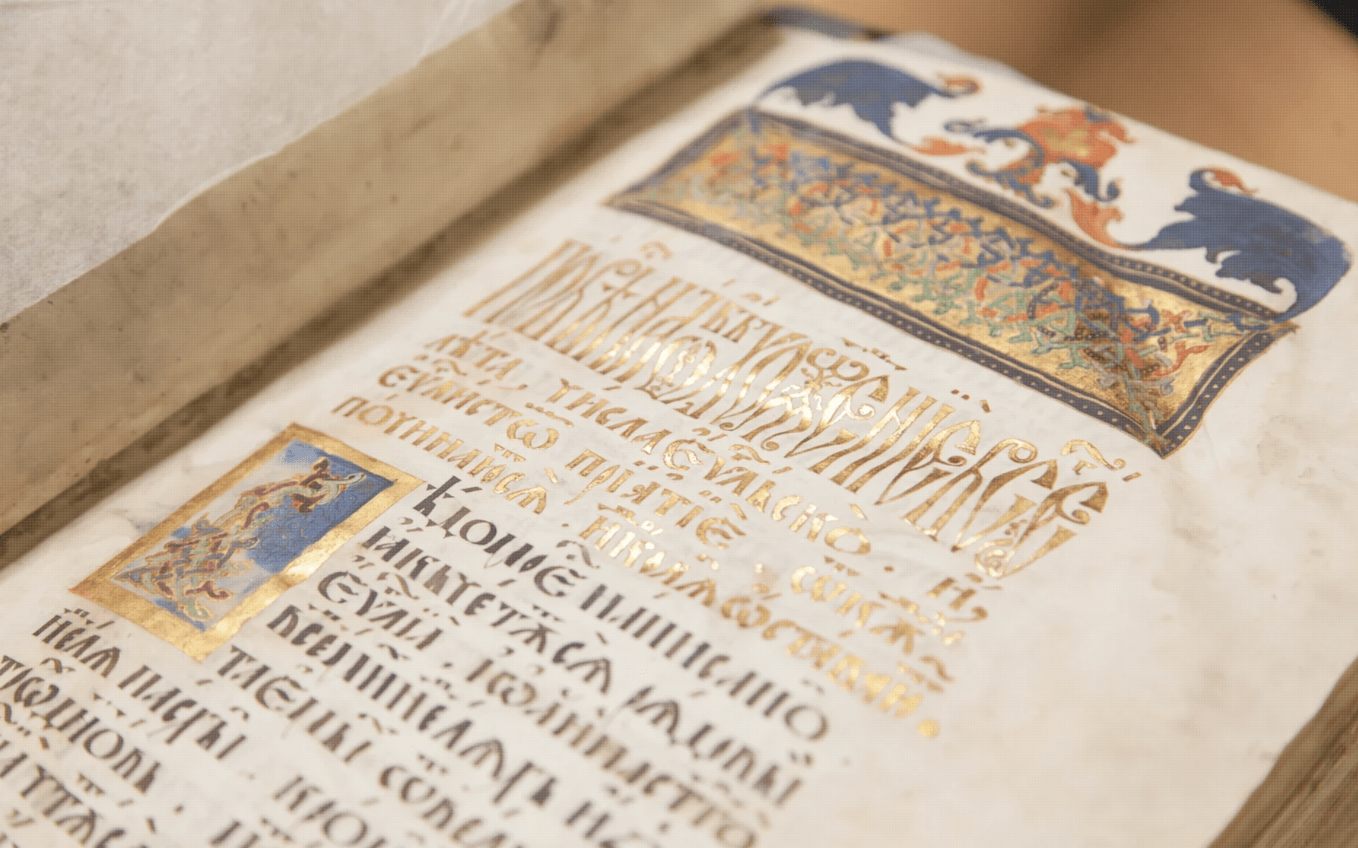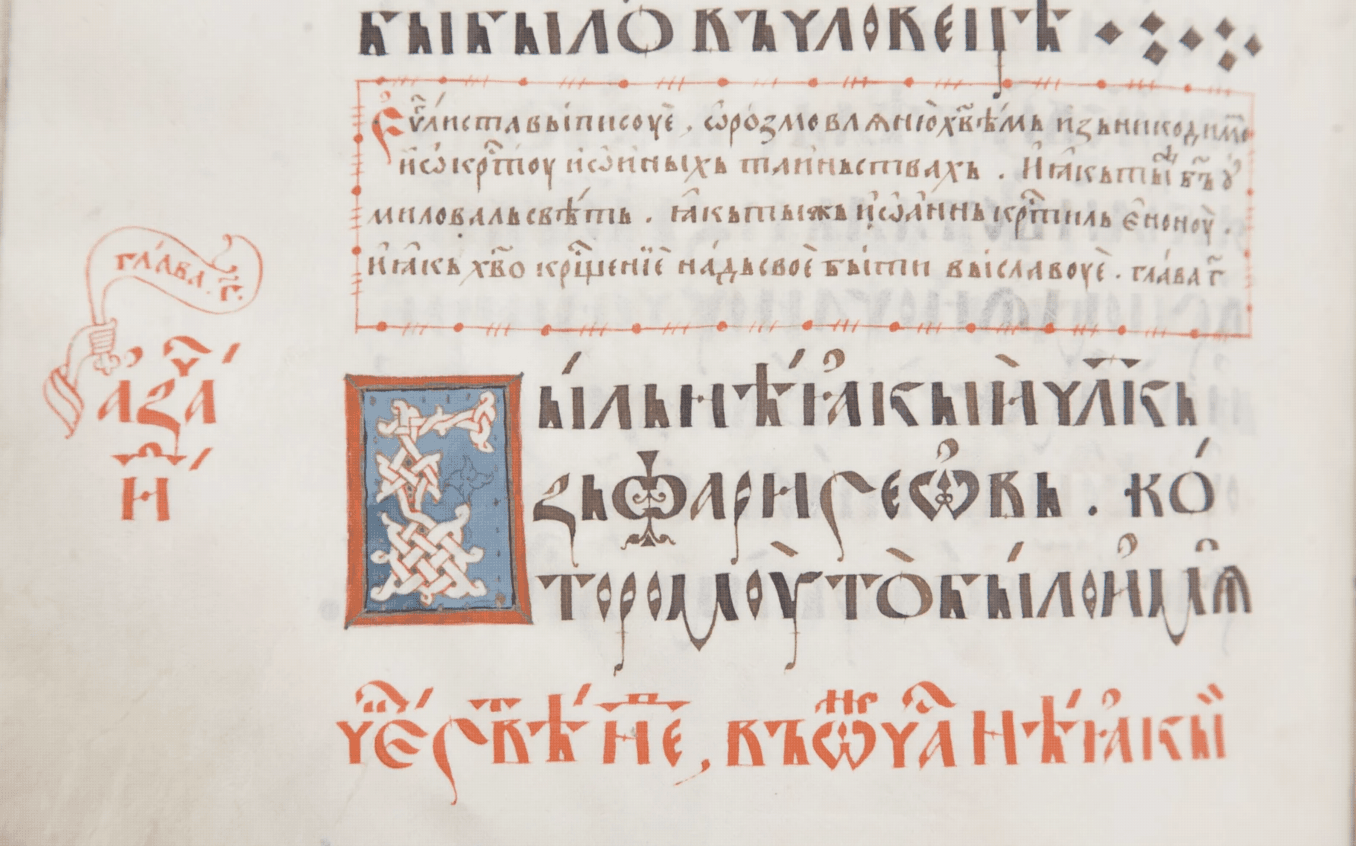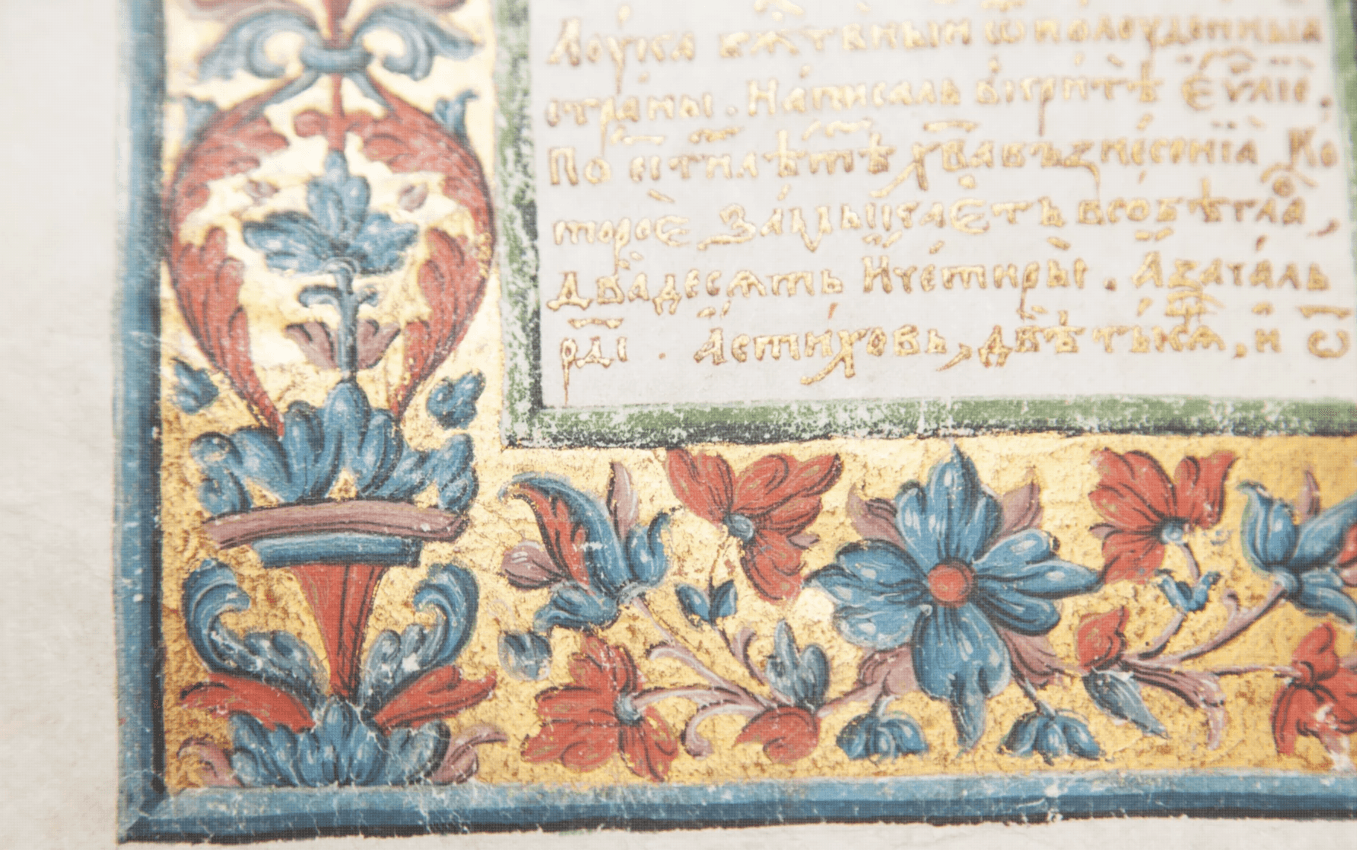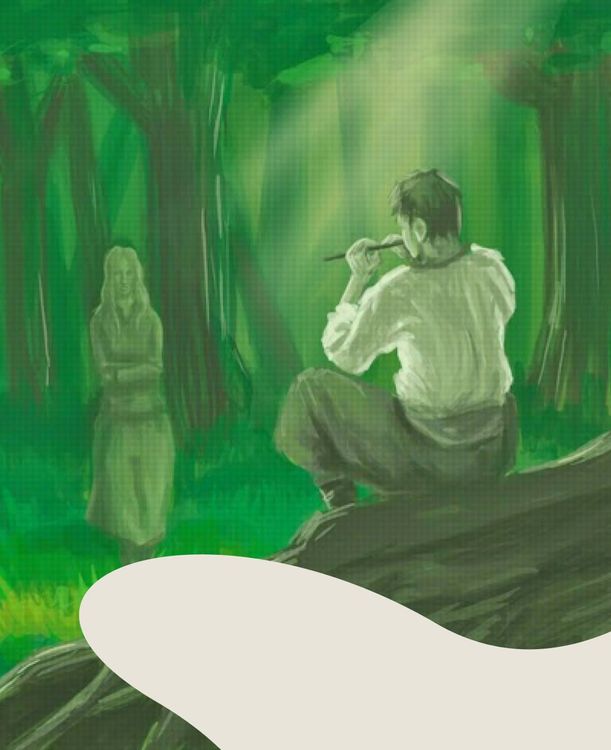Peresopnytske Yevanheliie (The Peresopnytsia Gospel)

The First Ukrainian Book. A manuscript revolution of the XVII century, aimed at fostering national awakening.
1556–1561
Fonts:
Mavka
Designer:
The Peresopnytsia Gospel was created thanks to a woman — Princess Anastasiia Zaslavska-Holshanska. She supported the monks in translating the text from bookish Church Slavonic language to the literary Ukrainian. Back in those days, such boldness had both democratic and heretical nature, a trait often seen only among nations with a free spirit.

The work on the future relic was not an easy task. The monks would wake up before dawn, kneeling in prayer, seeking divine enlightenment. The translators knew that their resistance against Latinization could result in their excommunication from the church and being declared anathema.
Nevertheless, the strength of their spirit and patriotism proved invincible.
At the time of the Peresopnytsia Gospel, the Ukrainian language as we know it today, thanks to Ivan Kotliarevsky who wrote a first poem in literary Ukrainian, had not yet existed. However, in the Gospel, one can find the first uses of the letters “ґ” /ge/ and “ї” /yi/ (during the Soviet era, the government sought to eradicate the use of these letters in order to make Ukrainian words sound more similar to Russian ones). Attempts to preserve cultural and religious identity in the Gospel were combined with an organic fusion of traditional ornamentation from Ukrainian folk art and Renaissance principles.

The Peresopnytsia Gospel has become a book for many centuries.
On its very first page, one will find a presentation inscription in Ukrainian from Hetman Ivan Mazepa (1639-1709), who provided a new cover for the manuscript and adorned it with precious gemstones. The most revered 19th-century Ukrainian poet Taras Shevchenko, in his notes, expressed his deep admiration for the aesthetic beauty and opulence of this relic, while another poet and writer Ivan Franko half a century later recognized the unparalleled significance of the Peresopnytsia Gospel.

Since 1991 and up to the present day, the First Book has been traditionally placed alongside the Constitution and the Act of Declaration of Independence of Ukraine during the inauguration of Ukrainian presidents.
It is considered the most treasured spiritual relic, symbolizing Ukrainian ancient statehood and indomitable spirit. A new president-elect places their right hand on it to swear allegiance to the Ukrainian people.
Fonts:
Mavka
Details:
Peresopnytske Yevanheliie (The Peresopnytsia Gospel)
Designer:
About font:
Next letter and event

Peresopnytske Yevanheliie (The Peresopnytsia Gospel)
this project
in social
“Shchedryk” (The Little Swallow)

Holodomor

1991 Ukrainian Independence Referendum

Crimean Tatars, Karaites and Krymchaks (qırımlılar, qaraylar)

Antonov AN-225 Mriya ("The Dream")


Falz-Fein and his “Askania Nova”

Yuzivka

“Smilyvi zavzhdy maiut shchastia” (“The brave always have happiness”)

Peresopnytske Yevanheliie (The Peresopnytsia Gospel)

Zaporizka Sich (The Zaporizhian Host)

Zaporizka Sich (The Zaporizhian Host)

Holodomor

Volia — collective concept, most often translated as Freedom

1991 Ukrainian Independence Referendum

Yrii (/'irij/: iriy), yndyk (/in'dik/: turkey) and yrod (/'irod/: Herod)

Creative & Tech Online Institute
Медіа про дизайн, креатив і тех індустрії

Ukrainski sichovi striltsi (The Ukrainian Sich Riflemen, or the USS)

“Shchedryk” (The Little Swallow)

“Yak umru to pokhovaite...” (When I am dead, bury me...)

Crimean Tatars, Karaites and Krymchaks (qırımlılar, qaraylar)

Volia — collective concept, most often translated as Freedom

Holodomor

Kvitka Cisyk (Kasey Cisyk)

1991 Ukrainian Independence Referendum

Crimean Tatars, Karaites and Krymchaks (qırımlılar, qaraylar)


Shliakh iz variah u hreky (Route from the Varangians to the Greeks)

Peresopnytske Yevanheliie (The Peresopnytsia Gospel)

Crimean Tatars, Karaites and Krymchaks (qırımlılar, qaraylar)

“Yoi, nai bude!” (Ah, let it be!)

“Yak umru to pokhovaite...” (When I am dead, bury me...)

“Smilyvi zavzhdy maiut shchastia” (“The brave always have happiness”)



